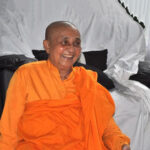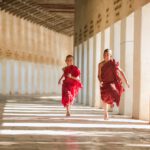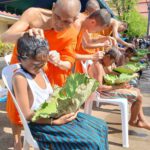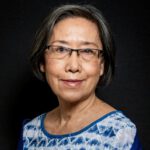UNESCO’s Memory of the World Program: The Case of the Minute Books of the Council of Siam Society under Royal Patronage
 UNESCO is a paper tiger. It often portrays its excellence in embarrassing ways; for instance, in the recognition of great personalities worldwide. Even M.R. Kukrit Pramoj, who had committed the crime of plagiarism, is listed by UNESCO as one of the world’s great personalities. Its World Heritage program is influenced by vested interests such as those of the tourism industry and local politicians. This program has also ruined many sites that are said to be of great significance for the common heritage of humanity. For example, once Luang Prabang was declared a World Heritage site, it became thoroughly commercialized, teeming with hotels, guest houses, tourists, and so on.
UNESCO is a paper tiger. It often portrays its excellence in embarrassing ways; for instance, in the recognition of great personalities worldwide. Even M.R. Kukrit Pramoj, who had committed the crime of plagiarism, is listed by UNESCO as one of the world’s great personalities. Its World Heritage program is influenced by vested interests such as those of the tourism industry and local politicians. This program has also ruined many sites that are said to be of great significance for the common heritage of humanity. For example, once Luang Prabang was declared a World Heritage site, it became thoroughly commercialized, teeming with hotels, guest houses, tourists, and so on.
One UNESCO program that may not be relatively well-known is Memory of the World, which includes many important documents from all over the world such as the Magna Carta and the Gutenberg Bible—but also more suspiciously the film The Wizard of Oz.
As for Siam, a number of its documents have been registered under this program. They are as follows: 1) the King Ramkhamhaeng Inscription (since 2003); 2) archival documents of King Chulalongkorn concerning reforms in Siam (since 2009); 3) the epigraphic archives of Wat Pho (since 2011); and 4) the minute books of the Council of Siam Society (in 2013). All these four documents are infused with the ruling class ideology. As such, the memory that they cultivate is only that of a usable past—usable to the powers-that-be.
The authenticity of the Ramkhamhaeng stele has been put into question, especially by Piriya Krairiksh. In other words, it could have been fabricated by King Rama IV himself. For me, this is really beside the point. Even if authentic, the stone inscription can be interpreted as an early form of propaganda by the ruling class to proclaim their greatness. The archival documents from King Chulalongkorn’s reign don’t contain any criticism of the king’s policies and actions. The epigraphic archives of Wat Pho were on a variety of subjects, both religious and secular. However, they were all made by King Rama III as well as Thai scholars who were in his favor. Not even mentioned in the epigraphic archives is the great poet Sunthorn Phu. In sum, although all these three documents are good historical records, they must be treated with great caution, especially as academic references.
The same logic applies to the fourth set of documents, the minute books of the Council of Siam Society under Royal Patronage. According to UNESCO’s website, these minute books include “the official records of the Council meetings and the General Meetings of the Siam Society from 1904 to 2004 and beyond. It reflects the Society’s system, process and outcome of work, its obstacles and challenges, the personalities and organizations contributing to its success and the scope of its work in a century of great international changes and development. It testifies to the continuous transactions and cooperation of an international and intellectual nature, among the many generations of people elected to carry out the work of the Siam Society over the long and eventful century.” This seems to be an overstatement, to say the least.
I was a Council member of the Siam Society. More precisely, I was its second Vice-President. The senior Vice-President was Kasem Suwannakul, who also often served as Acting President during Council meetings. The President was Puey Ungphakorn. During one meeting I pointed out that the minutes did not record a previous decision of the Council to use the Society’s money in a particular way. The Acting President however responded that it was an insignificant matter. When I contended that the Siam Society was a legal entity and therefore its administrators should respect the law and social rules, none of the members reacted favorably to my remark. The minutes thus did not mention about this financial decision as well as the Council members’ reactions to my suggestion. In another meeting held in 1969, there was a debate on whether or not the Council’s meeting should be conducted in Thai rather than English; this also meant that the minutes would be recorded in Thai. After all, the reasoning went, the Siam Society should be free from ‘Western imperialism.’ Michael Smithies, an Englishman fluent in Thai, was the one who raised this point. Aside from Smithies, the other Western members of the Council were also fluent in Thai. The proposal however was shot down because the Honorary Secretary (M.R. Pimsai Amranand) felt uncomfortable recording the minutes in Thai. Again, this fact cannot be found in the minute books registered under the Memory of the World program.
Moreover, my name could be found nowhere in the minute books. In fact, I was the person who nominated Phya Anuman Rajadhon to be President of the Siam Society. I was the one responsible for finding and selecting a number of the Society’s Presidents, including Prince Naradhip Bongsprabandh, Chitti Tingsabadh, and MR Patanachai Jayant.
I served as a Council member for almost two decades. My actions and the changes that I brought were not deemed worthy of being recorded in the minute books. When I ran afoul with the Honorary Secretary, I handed in my resignation. Prince Naradhip Bongsprabandh, who was the President, graciously visited me at my home and asked me to change my mind. Perhaps this too cannot be found in the minute books.
When I clashed with the Honorary Treasurer (Mrs. Katherine Buri), I also handed in my resignation. This time, the President, MR Patanachai Jayant didn’t plead me to change my decision. He merely said he felt sorry for my departure. However, when he wanted to be President for another term but couldn’t muster the support of several Council members, he came to ask for my help. I was then no longer a Council member, but I did what I could and he got what he wanted. This is hardly worth a mention in the minute books.
When I was a Council member, I only asked individuals with excellence to serve as honorary members such as Buddhadasa Bhikkhu, Venerable Payutto, Puey Ungphakorn, Prawase Wasi, Miss I.B. Horner, Soedjatmoko, and William Gedney. It seems that the Society has not kept up with this practice.
When the Siam Society was approaching its 72nd anniversary, I proposed that a celebration be held in good old Siamese way, replete with fortune-tellers and masseurs. A Western Council member responded that this idea was inappropriate because the Society is under royal patronage. I then had to correct him by saying that during the time of absolutism these ‘lowly’ practices were in fact a part of palace life.
From the minutes, it can be seen that a number of high-ranking princes such as Prince Vajirayan, Prince Devavongse Varoprakarn, and Prince Narisaranuvativongse had turned down the invitation to be royal patron of the Siam Society. Only Prince Damrong accepted the offer. To understand this we have to turn to the Thai sources. King Rama V saw the Siam Society as a Western plaything, and he insisted that high-ranking princes not be part of it. Prince Damrong was the exception because he had always liked being in the company of Westerners.
Dr. O. Frankfurter was a founding member of the Siam Society who also became one of its early Presidents. He had served in the Ministry of Foreign Affairs and as librarian of the Vajirayan National Library. He was a German nationalist who published underground anti-British propaganda tracts prior to WWI and urged the Siamese government not to side with London. This fact can be cross-checked in Sathirakoses’s Fuen Kwam Lang, a book which I had asked him to write.
Sukit Nimmanhemin played a significant role in altering the direction of the Siam Society in 1969. He was then serving as senior Vice-President. When the President, Phya Anuman Rajadhon, passed away we asked Sukit to take charge of the Society. He declined the offer. And therefore he had to take me to go invite Prince Naradhip Bongsprabandh instead. While Sukit was the Acting President he supported my initiative to organize a national conference on Buddhism and Thai society at the Siam Society. The conference was held in collaboration with the Buddhist Association of Thailand. Sanya Thammasak was President of the Association at the time. Both Sukit and Sanya presided over the conference opening ceremony. A rising star at the conference was P.A. Payutto. It was also the first Siam Society conference to hold a discussion session in the Thai language. (The first keynote address made at a Siam Society conference was delivered by William Gedney.)
In conclusion, the minute books of the Council of Siam Society are pretty sanitized and lifeless. As a whole, they seem to be concerned about farangs praising one another more than anything else. Above, I’ve tried to disrupt a bit this feel-good picture of the Siam Society.
Sulak Sivaraksa






